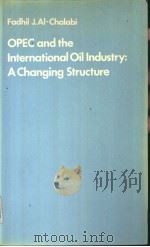《THE CHANGING STRUCTURE OF INTERNATIONAL LAW》
| 作者 | WOLFGANG FRIEDMANN 编者 |
|---|---|
| 出版 | STEVENS & SONS |
| 参考页数 | 410 |
| 出版时间 | 1964(求助前请核对) 目录预览 |
| ISBN号 | 无 — 求助条款 |
| PDF编号 | 818018438(仅供预览,未存储实际文件) |
| 求助格式 | 扫描PDF(若分多册发行,每次仅能受理1册) |

PART ONECHANGES IN THE STRUCTURE OF INTERNATIONAL RELATIONS AND LAW3
1.CHANGES IN THE ScOPE AND OBJEcTIVES OF INTERSTATE RELATIONS3
Structure of International Relations in the Formative Era of International Law4
The Changing Character of International Relations5
The Impact of Democratisation7
The Impact of Ideological Divisions8
The Concern with International Economic Development11
The Concern with Survival12
The Futility of War13
The Pursuit of Collective Security15
The Politics of Coexistence15
Concern for Survival: The Threat to Mankind’s Resources16
2.GROUP LOYALTIES AND NATIONAL ALLEGIANCE IN INTERNATIONAL RELATIONS20
The Internationalisation of Economic Interests21
Industrial Competition and International Cartels25
Public Control over Private International Business Activities26
Conflicts between Corporate Loyalties and Public National Policies29
3.NATIONAL SOVEREIGNTY IN OUR TIME31
Small Nations and the United Nations32
Great Powers and the United Nations34
The Anachronism of National Sovereignty35
International, Transnational and Supranational Society37
4.THE ROLE.OF THE INDIVIDUAL IN INTERNATIONAL RELATIONS40
Welfare Philosophy and the Concern for the Common Man40
The Helplessness of the Individual in Contemporary Society42
5.CO-OPERATION AND CONFLIcT AMONG NATIONS45
Power, Values, Ideology and Interest: Current Defiinitions45
The “ National Interest ”47
“ Power ” in International Relations48
Ideals and Power in International Politics50
Conflicts of Power, Conflicts of National Interest and Con-icts of Ideology51
Conflicts of Power and Conflicts of Interest53
National Interest, Value Conflicts and International Law55
International Law as an Agent of Progress58
6.THE CHANGING STRUCTURE OF INTERNATIONAL LAW60
The Three Levels of Contemporary International Law60
The International Law of Coexistence60
International Law of Co-operation: Universal Concerns61
International Law of Co-operation: Regional Groupings62
The New Dimensions of International Law64
The Expanding Scope of International Law67
PART TWOTHE PLACE OF INTERNATIONAL LAW75
7.NATURAL LAW AND POSITIVISM IN INTERNATIONAL LAW75
A Return to the Law of Nature?77
Antinomies in International Law79
8.THEREALITY OF INTERNATIONAL LAW81
Sovereignty and Sanction in International Law82
Recognition and Observance as Foundations of International Law86
Co-operative International Law and the Sanctions of Non-Participation88
9.NATIONAL SOVEREIGNTY AND SUPRANATIONAL ORDER IN THE EURO-PEAN COMMUNITIES96
The Communities as a New International “ Order ”96
The Constitutional Structure of the Communities98
Law-Making Powers of the Communities and Their Relation to the National Legal Orders of the Community States99
Community Norms and National Laws—The Question of Hierarchy106
The Relation of Community Law to General International Law110
Some Conclusions113
PART THREEPRINCIPLES AND PROCESSES OF LEGAL CHANGE IN INTERNATIONAL LAW117
10.PROCESSES AND INSTRUMENTALITIESOF LEGAL CHANGE IN INTER-NATIONAL LAw117
Processes of Legal Change in Municipal Law117
Legal Change in International Society—Some Characteristic Differences118
The Sources of Modern International Law120
Custom121
Treaties123
Modifications of the Unanimity Principle in Law-Making Treaties125
Reservations to Multilateral Treaties126
Departures from the Unanimity Rule in the Revision of Treaties129
“ Inter-Temporal Law ” and Legal Change130
Desuetude and Legal Change in International Law132
International Agreements134
The Role of Quasi-Legislative Bodies135
The Role of Courts141
The Role of National Courts146
The Role of Doctrine148
The Interaction of the Various Prc cesses of Legal Change—an Example149
11.NEW FIELDs OF INTERNATIONAL LAw152
A Preliminary Survey152
International Constitutional Law153
International Administrative Law159
International Labour Law162
International Criminal Law167
International Commercial Law170
International Economic Development Law176
International Corporation Law181
International Anti-Trust Law184
International Tax Law185
New Techniques in International Law186
12.THE USES OF “ GENERAL PRINCIPLES ” IN THE DEVELOPMENT OF INTERNATIONAL LAW188
The Intermingling of Public and Private Law190
The Use and Adaptation of General Principles of Law in the Evolution of Public International Law195
Three Types of “ General Principles ”196
12.THE USES OF “GENERAL PRINCIPLES”IN THE DEVELOPMENT OF INTERNATIONAL LAw—continued.200
International Concession Agreements and the Contrat Administrati f200
Unjust Enrichment206
PART FOURTHE NEW SUBJECTS OF INTERNATIONAL LAW213
13.PUBLICINTERNATIONAL CORPORATIONS AS SUBJECTS OF INTER-NATIONAL LAw213
The Privileged Position of States213
The Status of Public International Corporations216
The Intergovernmental Corporation of Private Law219
14.PRIVATE CORPORATIONS AS SUBJECTS OF INTERNATIONAL LAW221
Legal Status of Private Corporations in the European Com-munities224
Indirect Attempts to Strengthen the Position of Private Cor-porations in International Law225
International Legal Controls over Private Corporations228
15.THE INDIVIDUAL AS A SUBJECT OF INTERNATIONAL LAw232
The Individual as a Subject of Rights in International Law234
The Position of the Individual under the European Conven-tion of Human Rights242
Group Representation of the Individual244
The Legal Responsibility of Individuals in International Law245
PART FIVEPROBLEMS AND TRENDS OF INTERNATIONAL ORGANISATION253
16.THE INTERNATIONAL ORGANISATION OF SECURITY AND THE USE OF FORCE253
The Defiinition of Aggression254
Regional Defence Organisations258
The Threat of Total Destruction and Self-Defence259
“Indirect” Aggression, National Sovereignty, and Collective Security262
Some Conclusions273
17.TRENDS AND PATTERNS OF INTERNATIONAL WELFARE ORGANISATION275
The Constitutional and the Functional Approach to Inter-national Organisation275
17.TRENDS AND PATTERNS OF INTERNATIONAL WELFARE ORGANISATION—continued.277
Patterns of Internatienal Organisation277
The Interrelation of Objectives, Powers, and Extension in International Organisations278
The European Communities and International Organisation286
Legal Status, Financial Autonomy and the Trend of Inter- national Organisation288
Operational Independence and Financial Autonomy291
The Moral Personality of International Organisations292
Conclusion293
PART SIXMANKIND’S DIVISIONS AND THE UNIVERSALITY OF INTERNATIONAL LAW297
18.A UNIVERSALINTERNATIONAL LAW OF COEXISTENCE AND THE WORLD’S MAJOR CULTURAL ORDERS297
Minimum Conditions of Coexistence298
National Sovereignty, Observance of Promises, and the Use of Force: A Comparison between the Attitudes of the Major Legal Order298
The Western Democratic Approach299
The Binding Character of Promises300
National Interest and International Law302
Latin American Attitudes303
Islamic Legal Values and International Law306
Hindu Philosophy and International Law309
Chinese Civilisation and International Law311
The Modem State Practice of Asian States313
19.UNDERDEVELOPED COUNTRIES AND THE UNIVERSALITY OF INTER-NATIONAL LAW317
Conflicts of Interest between Developed and Developing Countries317
Disguise of Conflicts of Interest as Philosophies of Value321
Panch Shila, Buddhism and Coexistence322
20.CONFLICTSOF POLITICAL IDEOLOGY AND THE UNIVERSALITY OF INTERNATIONAL LAW325
Imperialist Systems and the Acceptance of International Law325
Modern Communism and International Law327
The Role of the Treaty in the Soviet Theory of International Law333
Some Conclusions on the Communist Approach to Inter-national Law336
21.STATE CONTROL OVER ECONOMIC ACTIVITIES AND THE UNIVERSALITY OF INTERNATIONAL LAW341
State Control and Private Trading—Myth and Reality341
State Trading and Sovereign Immunities343
State Trading and the Duties of Abstention in the Law of Neutrality346
The Status of the Government-Trading Corporation in International Law349
State Trading and the Most-Favoured-Nation Clause352
State Trading and Restrictive Practices356
Co-operation between State Traders and Private Traders358
PART SEVEN365
22.SUMMARY AND CONCLUSIONS365
Ⅰ.Changes in the Structure of International Relations365
Ⅱ.The Place of International Law369
Ⅲ.Principles and Processes of Change in International Law370
Ⅳ.The New Subjects of International Law374
Ⅴ.Scope and Patterns of International Organisation376
Ⅵ.Mankind’s Divisions and the Universality of Inter-national Law379
List of Writings Cited383
Index397
1964《THE CHANGING STRUCTURE OF INTERNATIONAL LAW》由于是年代较久的资料都绝版了,几乎不可能购买到实物。如果大家为了学习确实需要,可向博主求助其电子版PDF文件(由WOLFGANG FRIEDMANN 1964 STEVENS & SONS 出版的版本) 。对合法合规的求助,我会当即受理并将下载地址发送给你。
高度相关资料
-

- The Law of International Trade
- 1993 Butterworth-Heinemann
-

- THE DYNAMICS OF INTERNATIONAL LAW
- 1976 PROFESSIONAL BOOKS LIMITED
-

- THE INTERNATIONAL LAW OF RECOGNITION
- 1951 STEVENS & SONS LIMITED
-

- THE DEVELOPMENT OF INTERNATIONAL LAW BY THE INTERNATIONAL COURT
- 1958 STEVENS & SONS LIMITED
-
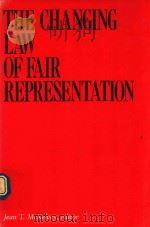
- The Changing law of fair representation
- 1985 ILR press
-
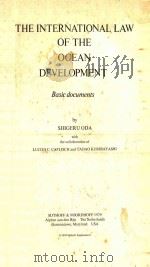
- THE INTERNATIONAL LAW OF THE OCEAN DEVELOMENT
- 1979 COPYRIGHT
-
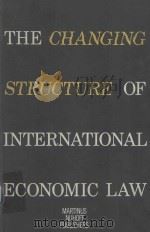
- THE CHANGING STRUCTURE OF INTERNATIONAL ECONOMIC LAW
- 1981 MARTINUS NIJHOFF PUBLISHERS
-

- The Changing International Law of High Seas Fisheries
- 1999 Cambridge University Press
-

- The International Law of the Sea
- 1994 Dartmouth
-

- The Law of International Organisations
- 1996 Manchester University Press
-
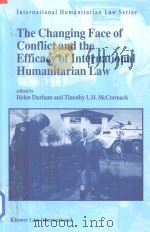
- The Changing Face of Conflict and the Efficacy of International Humanitarian Law
- 1999 Martinus Nijhoff Publishers
-

- THE ECONOMIC STRUCTURE OF CORPORATE LAW
- 1991 HARVARD UNIVERSITY PRESS
-

- CHANGING YOUR MIND THE LAW OF REGRETTED DECISIONS
- 1998 YALE UNIVERSITY PRESS NEW HAVEN & LONDON
-

- The international law of human rights
- 1983 Clarendon Press
提示:百度云已更名为百度网盘(百度盘),天翼云盘、微盘下载地址……暂未提供。➥ PDF文字可复制化或转WORD
